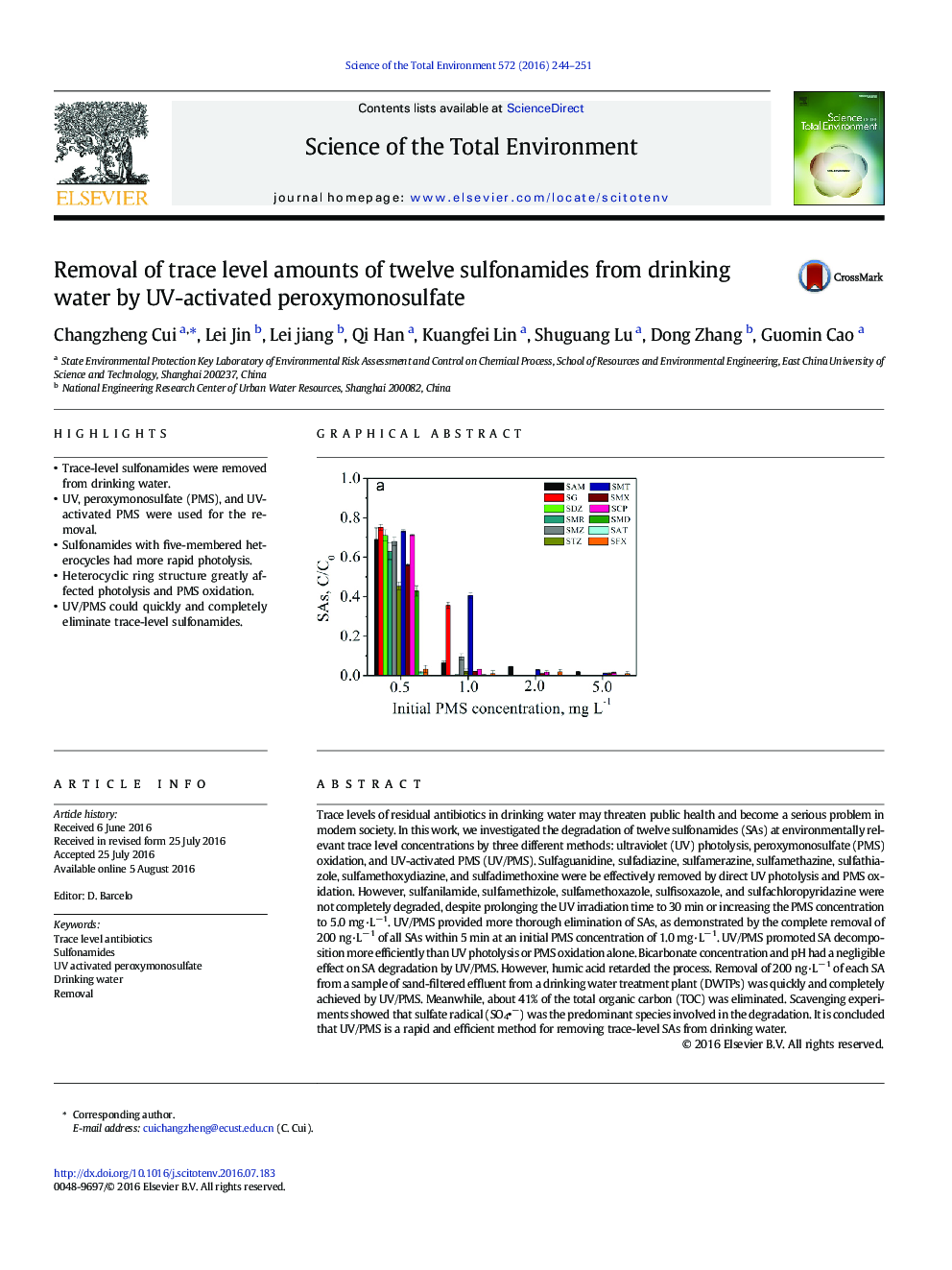| کد مقاله | کد نشریه | سال انتشار | مقاله انگلیسی | نسخه تمام متن |
|---|---|---|---|---|
| 6320603 | 1619719 | 2016 | 8 صفحه PDF | دانلود رایگان |

- Trace-level sulfonamides were removed from drinking water.
- UV, peroxymonosulfate (PMS), and UV-activated PMS were used for the removal.
- Sulfonamides with five-membered heterocycles had more rapid photolysis.
- Heterocyclic ring structure greatly affected photolysis and PMS oxidation.
- UV/PMS could quickly and completely eliminate trace-level sulfonamides.
Trace levels of residual antibiotics in drinking water may threaten public health and become a serious problem in modern society. In this work, we investigated the degradation of twelve sulfonamides (SAs) at environmentally relevant trace level concentrations by three different methods: ultraviolet (UV) photolysis, peroxymonosulfate (PMS) oxidation, and UV-activated PMS (UV/PMS). Sulfaguanidine, sulfadiazine, sulfamerazine, sulfamethazine, sulfathiazole, sulfamethoxydiazine, and sulfadimethoxine were be effectively removed by direct UV photolysis and PMS oxidation. However, sulfanilamide, sulfamethizole, sulfamethoxazole, sulfisoxazole, and sulfachloropyridazine were not completely degraded, despite prolonging the UV irradiation time to 30 min or increasing the PMS concentration to 5.0 mg·Lâ 1. UV/PMS provided more thorough elimination of SAs, as demonstrated by the complete removal of 200 ng·Lâ 1 of all SAs within 5 min at an initial PMS concentration of 1.0 mg·Lâ 1. UV/PMS promoted SA decomposition more efficiently than UV photolysis or PMS oxidation alone. Bicarbonate concentration and pH had a negligible effect on SA degradation by UV/PMS. However, humic acid retarded the process. Removal of 200 ng·Lâ 1 of each SA from a sample of sand-filtered effluent from a drinking water treatment plant (DWTPs) was quickly and completely achieved by UV/PMS. Meanwhile, about 41% of the total organic carbon (TOC) was eliminated. Scavenging experiments showed that sulfate radical (SO4â) was the predominant species involved in the degradation. It is concluded that UV/PMS is a rapid and efficient method for removing trace-level SAs from drinking water.
116
Journal: Science of The Total Environment - Volume 572, 1 December 2016, Pages 244-251